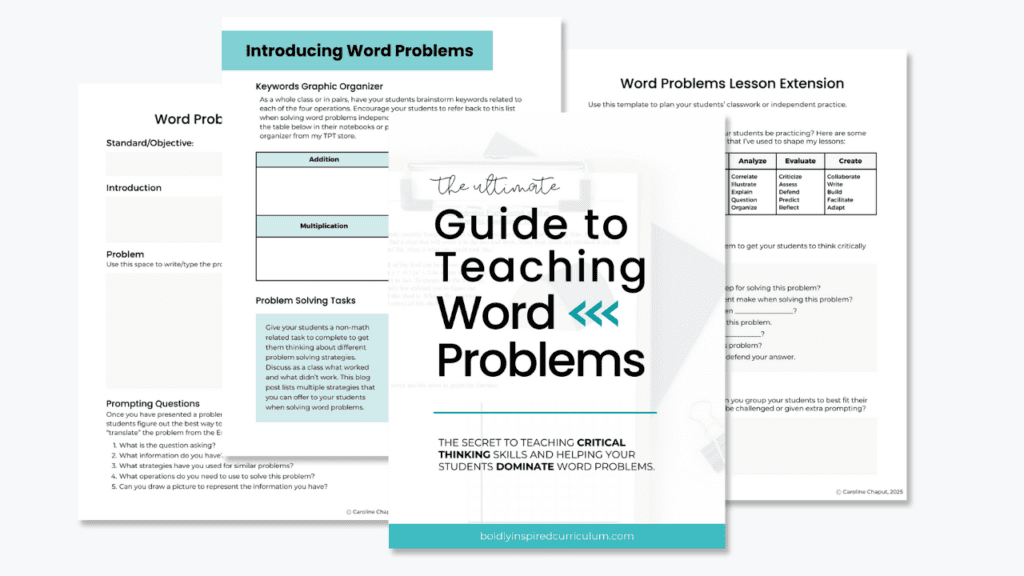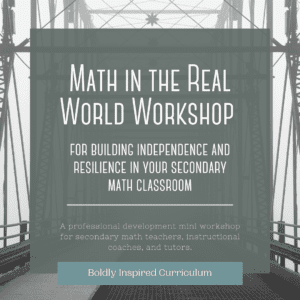So you’ve done some work with word problems in your math class and your students still don’t know where to start… They’ll just look at the question and give up before they even try.
Here’s what I’ve noticed with my students: problem solving skills don’t come naturally to all students. They need to learn strategies to work through the beginning, middle, and end of a problem.

Table of Contents
ToggleGetting started with problem solving
What I’ve found with many of my students is that they truly have no idea where to begin. I give them a word problem and they stare blankly at the words because the equation they need to solve wasn’t given to them. They often need a lot of prompting to get going on the right track.
These are some of the questions I ask to get them thinking about the problem:
- What is the question asking?
- What do you need to figure out?
- What could your variables represent?
These questions give your students a place to start and the goal is that they will begin to ask themselves these questions on their own. They are vague enough so that you’re not just spoon feeding them the answers. Once your students know what they need to figure out, they can begin to brainstorm strategies for solving the problem.
Working through the struggle
The “struggle” as I like to call it is my favorite part of the problem solving process. This is where the most learning happens. I always tell my students that I can walk them through a problem ten times over, but they won’t actually learn anything until they are able to work through it on their own.
I can explain it to them, but I can’t understand it for them.
The struggle is frustrating and uncomfortable, especially to a generation of students who have unlimited access to any question they have in their pocket.
Growth Mindset
Growth mindset is so important to have not only for high school, but for life. As a recovering perfectionist, it is so important to me to make sure that I normalize making mistakes in my classroom.
So much of what makes our students shut down when they see a word problem or even just a problem they haven’t seen before is being afraid to make mistakes. I always want my students to know that my classroom is a place where they can feel safe getting out of their comfort zone and trying new strategies.



